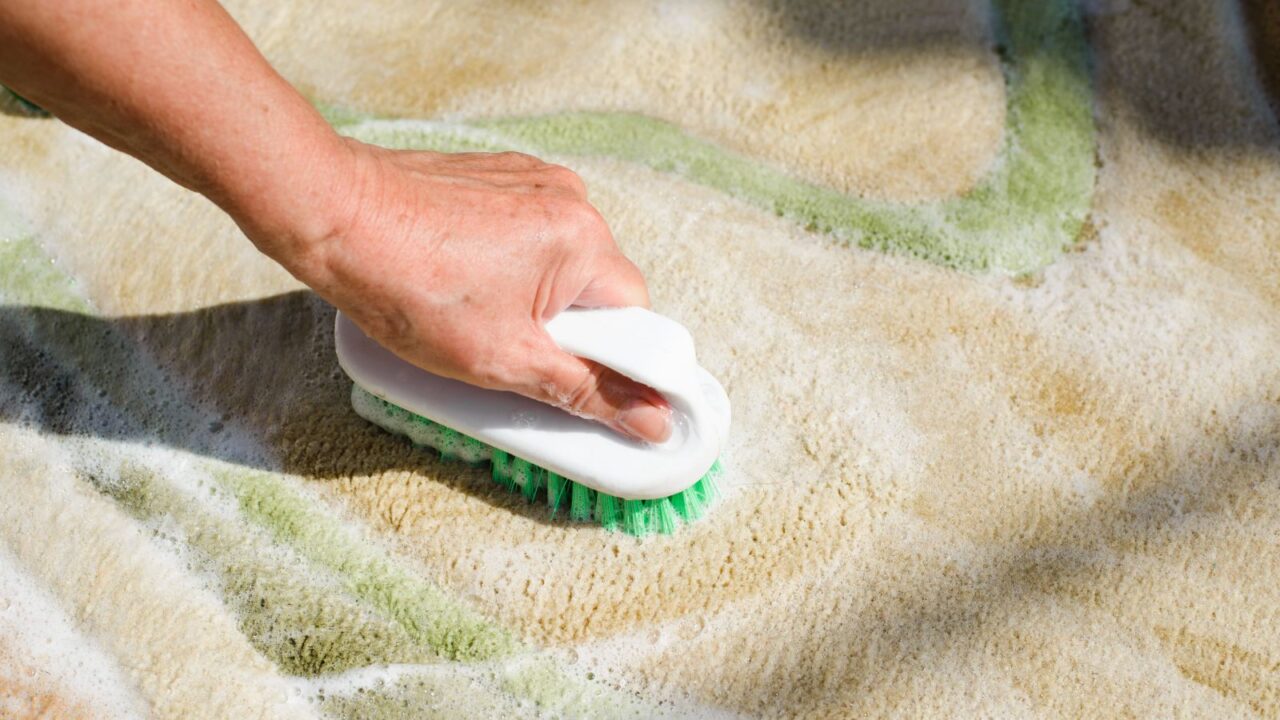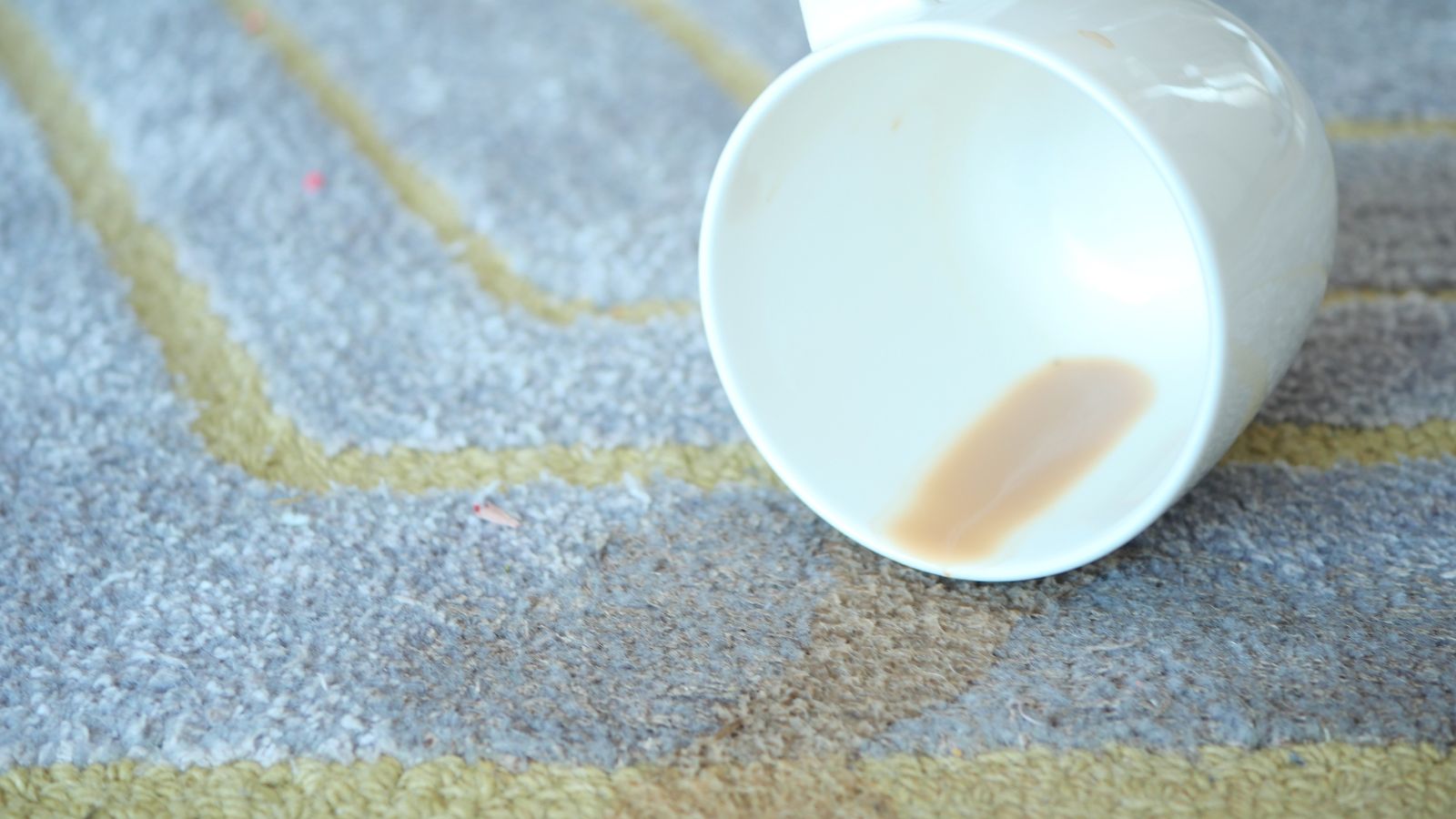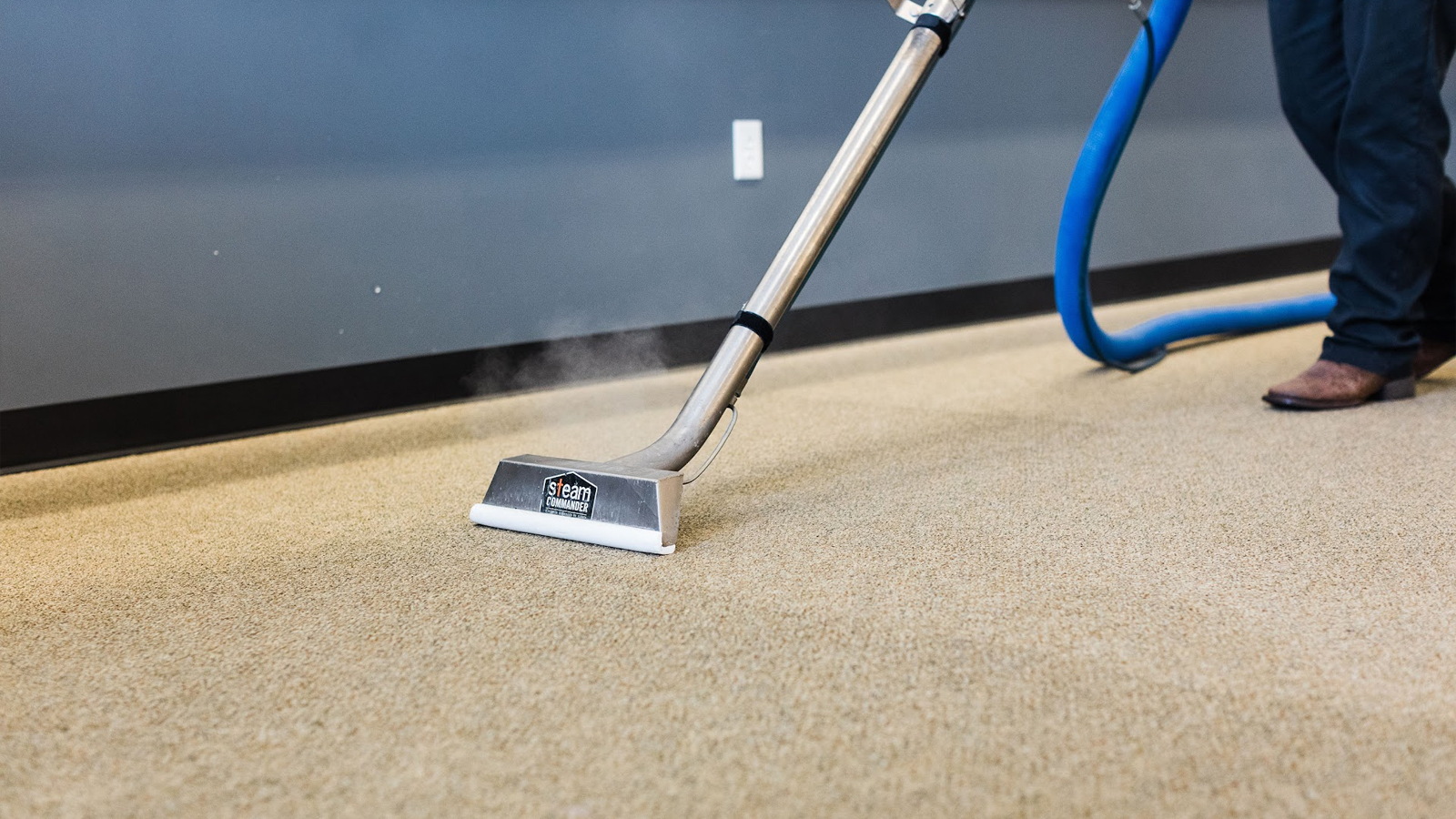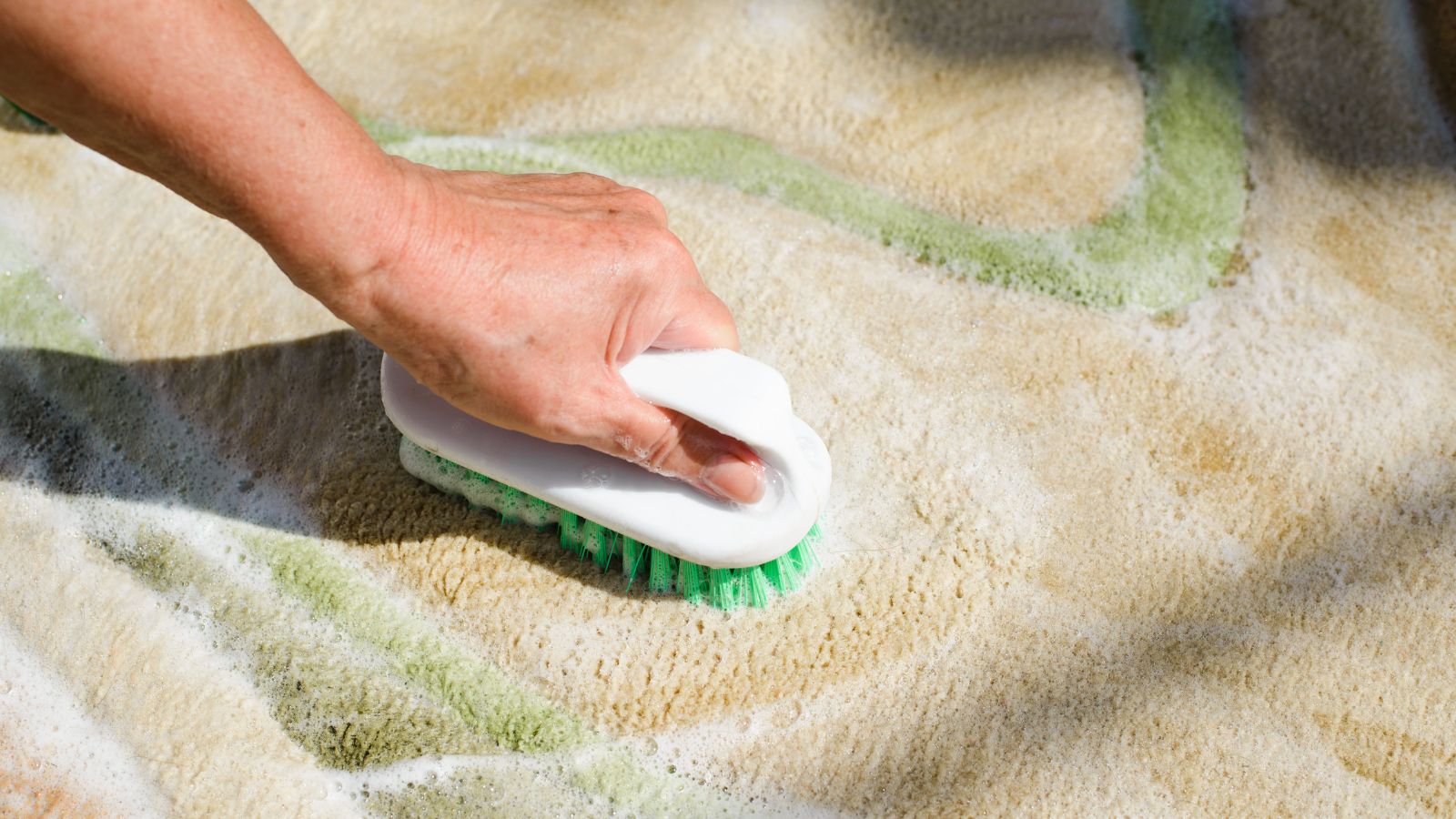Carpets are a favorite for many, offering comfort, warmth, and a cozy feel. Yet, accidents can lead to stains, making stain removal crucial. Whether it’s wine spills, pet mishaps, or food drops, knowing how to remove stains is key to keeping carpets looking good.
This guide will delve into various stain removal methods, including tips, tools, and tricks. We’ll cover identifying stains, choosing the right cleaning products, and techniques. Our aim is to equip you with the knowledge to maintain your carpets’ appearance and longevity.
Carpet fibers like nylon, polyester, olefin, and wool require specific care. Stains can be water-based (coffee, wine), oil-based (grease), protein-based (blood), or other (ink, paint). Understanding these categories is vital for effective stain removal.
We’ll explore DIY methods using items like vinegar, baking soda, and hydrogen peroxide. We’ll also discuss commercial products like stain removers and shampoos. Techniques for common stains like coffee, grease, and pet accidents will be covered in detail.
Key Takeaways:
- Identify the type of carpet fiber and stain for effective removal
- Use appropriate DIY or commercial cleaning solutions
- Follow specific techniques for common stains like coffee, wine, and pet accidents
- Implement preventive measures to avoid future stains
- Consider professional cleaning services for deep cleaning and tough stains
Introduction: The Importance of Carpet Care and Stain Removal
Carpet stains are a common issue, often becoming permanent if not addressed quickly. Yet, keeping your carpet clean is vital for several reasons. It improves indoor air quality and extends your carpet’s lifespan.
Why Clean Carpets Matter
Regular carpet cleaning solutions can save you money by avoiding expensive repairs or replacements. Clean carpets also contribute to a healthier living space. They reduce allergies, respiratory problems, and mold growth.
For those with respiratory conditions or allergies, clean carpets can significantly improve their health and well-being. This is because they help alleviate symptoms and enhance overall quality of life.
Regular vacuuming can remove allergens like dust mites and pet dander. This reduces the risk of respiratory issues. Vacuuming catches dirt particles before they embed in your carpet. This extends its lifespan and keeps it soft and comfortable.
Learn More: Professional Carpet Cleaning Benefits
Common Causes of Carpet Stains
Carpet stains can stem from various sources, including spills, pet accidents, ink, and oil-based substances. These stains not only mar the carpet’s appearance but can also cause unpleasant odors and health risks if untreated. Therefore, regular care and prompt stain removal are key to maintaining your carpets’ appearance and a healthy home environment.
Understanding Carpet Material Types
Different carpet materials demand specific care and stain removal methods. Knowing your carpet’s material is crucial for effective stain removal and maintenance. Common carpet materials include:
- Nylon: Durable and stain-resistant, making it a popular choice for high-traffic areas.
- Polyester: Known for its softness and resistance to fading, but may be more prone to staining.
- Wool: A natural, luxurious material that requires gentle cleaning methods to avoid damage.
- Olefin: Resistant to moisture and staining, making it ideal for indoor/outdoor use.
Identifying your carpet material allows you to select the best cleaning solution and techniques. This ensures effective stain treatment while preserving your carpet’s quality.
Pre-Treatment Steps for Effective Stain Removal
Before tackling removing carpet stains, it’s crucial to prepare with a few essential steps. These steps ensure you’re ready to assess the stain, gather necessary tools, and test cleaning solutions. This approach helps avoid damaging your carpet fibers.
Assessing the Stain
Identifying the stain type is the first step in carpet stain removal. Whether it’s a fresh coffee spill or an old stain, knowing the stain’s nature guides your cleaning method. Common stains include:
- Food and beverage stains (e.g., coffee, tea, wine, chocolate)
- Pet stains and odors
- Ink and dye stains
- Oil-based stains (e.g., grease, makeup)
Testing Cleaning Solutions
It’s vital to test any cleaning solution on an unseen carpet area before application. This step prevents discoloration or damage to your carpet fibers. Here’s how to test a cleaning solution:
- Find a hidden carpet area, like a corner or under furniture.
- Apply a small amount of the solution to the test area.
- Wait 24 hours to check for any discoloration or damage.
- If the area remains unaffected, proceed with cleaning the stain.
Gathering Essential Tools
Having the right tools is key to efficient carpet stain removal. Essential tools include:
- Clean white cloths or towels
- Carpet stain remover or homemade solutions
- Vacuum cleaner
- Soft-bristled brush
- Water and a spray bottle
Stains need to be acted upon quickly as the longer they sit, the harder they are to remove.
By following these pre-treatment steps, you’re set to tackle any carpet stain. Remember, quick action and the right tools and techniques are crucial for successful stain removal and maintaining your carpets’ appearance.
Learn more about common carpet cleaning mistakes.
General Techniques for Basic Stain Removal
Removing stains from carpet depends on the carpet type and stain nature. Whether it’s a fresh spill or an old stain, these methods can help. They are effective for various stain types.
Blotting and Dabbing: Avoiding Rubbing
One key rule in stain removal is to avoid rubbing. Rubbing can push the stain deeper into the carpet, making it harder to remove. Use a clean, white cloth or paper towel to blot the stain gently. Start from the outside and move towards the center to prevent spreading.
Using Water and Gentle Cleaners
For many stains, water is a good first step. If water alone doesn’t work, try a gentle carpet cleaner or a DIY solution. Here are some common cleaning solutions for different stains:
| Stain Type | Cleaning Solution |
| Water-soluble (washable ink, milk, latex paint) | Water + Vinegar + Dish Soap |
| Non-water-soluble (wine, pet messes, blood, chocolate) | Enzyme laundry detergent (Axion or Biz) |
| Old grease stains | Baking Soda + Vinegar |
Always test the cleaning solution on a hidden area of the carpet before applying it to the stain.
Carpet-Bristle Brushes and Their Proper Use
A carpet-bristle brush is useful for removing stains, especially old ones. Gently agitate the carpet fibers with the brush to loosen the stain. Be careful not to brush too hard, as it can damage the fibers.
When using a carpet-bristle brush, brush in the direction of the carpet pile. This helps maintain the carpet’s texture and appearance.
“Cleaning old stains requires patience, as the longer a stain sits, the harder it is to clean.”
While these techniques work for many stains, some may need professional cleaning. If unsure about how to remove a stain or worry about damaging your carpet, consult a professional.
Removal Techniques for Specific Stain Types
Different stains on your carpet need unique cleaning methods. Knowing how to tackle various stains can help maintain your carpet’s appearance. This knowledge is crucial for removing stubborn stains effectively.
Food and Beverage Stains
Start by blotting food and drink stains with a clean cloth to soak up as much as you can. This approach can prevent stains from becoming permanent. For coffee, a mild dishwashing detergent and warm water solution works well. When dealing with wine, use a hydrogen peroxide and dish soap mix carefully. Too much liquid can damage the carpet and spread the stain.
Pet Stains and Odor Management
Pet stains, especially urine, can be hard to remove and may leave lasting odors. An enzymatic pet stain remover is effective against these issues. It breaks down uric acid and eliminates odors. For pet urine stains, enzymatic cleaners are the best at removing proteins and neutralizing smells.
Ink and Dye Stains
Ink and dye stains are particularly tough and might need a dry-cleaning solvent or professional cleaner. To tackle these at home, apply isopropyl rubbing alcohol to a cloth and blot the stain. Then, clean with a mild dishwashing detergent and warm water solution. Repeat this process, allowing the solution to sit on the stain for about 5 minutes each time for best results.
Oil-Based Stains
Oil-based stains, like those from makeup or cooking oil, can treat the stain with baking soda or a dry-solvent spot cleaner. For oil-based paint spills, use acetone or a nail polish remover with amyl acetate. Always blot the stain with a clean cloth and avoid rubbing, which can push the stain deeper into the carpet.
| Stain Type | Cleaning Solution | Technique |
| Coffee | Mild dishwashing detergent and warm water | Blot, apply solution, repeat as needed |
| Red Wine | Hydrogen peroxide and dish soap | Blot, apply solution sparingly, repeat as needed |
| Pet Urine | Enzymatic pet stain remover | Apply solution, allow to sit, blot, repeat as needed |
| Ink | Isopropyl rubbing alcohol, mild detergent and warm water | Blot with alcohol, clean with detergent solution, repeat |
| Oil-Based | Baking soda or dry-solvent spot cleaner | Apply solution, blot, rinse with non-flammable solvent |
Advanced Techniques for Tough Stains
Dealing with stubborn stains on your carpet requires advanced methods. Techniques like steam cleaning, hot water extraction, and specialized machines are effective against tough stains.
A study in the Journal of Environmental Health found vacuuming alone can’t remove all dust, dirt, and bacteria from carpets. Advanced cleaning methods are necessary. Steam cleaning and hot water extraction use hot water to break down and remove stains, dirt, and allergens from carpet fibers.
When using a commercial carpet stain removal machine, follow the manufacturer’s instructions closely. Machines like those from Whittaker are designed for professionals and can effectively remove stains. Always test a cleaning solution on a small, hidden area first to avoid damage or discoloration.
Steam Cleaning and Hot Water Extraction
Steam cleaning and hot water extraction are top choices for professionals. These methods inject hot water and solution into the carpet, then extract it with the dirt and stains. This deep cleaning removes hidden dirt and allergens, leaving carpets fresh and clean.
Using Carpet Stain Removal Machines
For tough stains, consider a specialized carpet stain removal machine. These machines target specific stains and are easier to use than traditional methods. Always test the machine on a small area before applying it to the stain.
Chemical Stain Removal Agents
Chemical stain removal agents are a last resort for the toughest stains. These products contain strong solvents and should be used with caution. Always follow the instructions carefully and ventilate the area well. Wear gloves to protect your skin.
| Stain Type | Cleaning Solution | Removal Method |
| Water-soluble (coffee, tea, wine) | Water and dish soap | Blot with a clean cloth, then rinse with water |
| Oil-based (makeup, grease) | Baking soda and vinegar | Apply baking soda, then spray with vinegar and blot |
| Pet stains | Enzymatic cleaner | Apply cleaner, let sit, then blot and rinse |
Acting quickly is crucial when dealing with carpet stains. The longer a stain sits, the harder it is to remove. By employing these advanced techniques and tools, you can effectively tackle tough stains and maintain your carpets’ appearance.
When to Seek Professional Help
Knowing how to remove stains from your carpet is a valuable skill. However, sometimes you may encounter a stain that is too tough to remove on your own. If you’ve tried various DIY methods and the stain persists, it may be time to seek professional help.
Identifying Unmanageable Stains
Stains caused by permanent ink, paint, or large amounts of grease can be particularly challenging to remove without professional equipment and expertise. These types of stains often penetrate deep into the carpet fibers. This makes them resistant to traditional cleaning methods.
According to statistics, immediate action is crucial when a stain occurs. Act fast, identify the stain, use cold water, avoid rubbing, and dry thoroughly. If the stain persists, consider seeking professional help to get rid of carpet stains effectively.
Choosing a Professional Carpet Cleaning Service
When selecting a professional carpet cleaning service to remove stains from your carpet, look for a reputable company with experience in handling tough stains. Consider factors such as their cleaning techniques, equipment, and customer reviews.
| Cleaning Technique | Effectiveness | Best For |
| Hot Water Extraction (Steam Cleaning) | High | Deep-set stains, allergens, and dirt |
| Dry Cleaning | Moderate | Quick cleaning, maintenance between deep cleans |
| Encapsulation | Moderate to High | High-traffic areas, commercial spaces |
Professional steam cleaning, also known as hot water extraction, is a proven method for effective carpet stain removal. This technique helps remove built-in dirt, dust particles, and debris from carpets. It’s an excellent choice for removing allergens like dust, pollen, and pet hair.
“The Steam Commander carpet cleaning team has the tools, skills, and knowledge to clean both the top layer and the padding of the carpet where stains tend to set in.”
Ultimately, regular carpet cleaning by professionals can help reduce the risk of stains setting in and prolong the life of your carpets. When a stain proves too tough to remove on your own, don’t hesitate to seek the assistance of a trusted carpet cleaning service. They can restore your carpets to their former glory.
Summary
Removing stains from your carpet can seem daunting, but with the right tools and knowledge, it’s achievable. Act fast when a spill happens, as delays make stains harder to remove. Always blot, never rub, to avoid spreading the stain and damaging fibers. When using a cleaning solution, apply it to a cloth first, then blot the stain from the outside in.
For water-based stains like coffee or juice, a mix of water and mild dish soap often works. However, oil-based stains may require specialized cleaners or professional help. Always test cleaning products on a hidden area of the carpet to prevent damage or color changes.
Regular maintenance, such as vacuuming and quick spill response, keeps carpets in top condition. Quality stain removal products and following instructions carefully can help tackle future stains. If a stain is too tough, don’t hesitate to call a professional. With the right approach, your carpets will stay clean, fresh, and inviting for years.
FAQ
How can I remove old, set-in stains from my carpet?
To tackle old, set-in stains, use a commercial carpet stain remover made for tough stains. Apply the solution to the stain and work it into the fibers with a brush. Then, blot the area with a clean cloth. For stains that won’t budge, steam cleaning or professional services might be needed.
What is the best way to remove pet stains from carpets?
For pet stains, start by blotting the area with a clean cloth to soak up as much as you can. Next, use an enzymatic cleaner designed for pet stains. These products break down the proteins in the stain. Follow the product’s instructions and repeat if needed. For stubborn stains, professional carpet cleaning is a good option.
How do I remove red wine stains from my carpet?
To tackle red wine stains, first blot the area with a clean cloth to absorb as much wine as you can. Then, mix hydrogen peroxide and dish soap and apply it to the stain. Gently work it into the fibers and blot until the stain disappears. For persistent stains, a commercial stain remover or professional cleaning might be necessary.
Can I use bleach to remove stains from my carpet?
Using bleach on carpet stains is not recommended as it can damage the fibers and cause discoloration. Instead, choose carpet-safe cleaning solutions like oxygen-based cleaners or commercial stain removers. Always test any cleaning solution on a hidden area first to avoid damage.
What is the best way to remove coffee stains from carpet?
To remove coffee stains, start by blotting the stain with a clean cloth to absorb as much coffee as possible. Then, mix white vinegar, water, and gentle dish soap and apply it to the stain. Work the solution into the fibers with a brush and blot with a clean cloth. Repeat until the stain is gone.
How often should I have my carpets professionally cleaned?
Professional carpet cleaning is recommended every 12 to 18 months, depending on foot traffic, pets, and home cleanliness. It removes stubborn stains, extends carpet life, and improves air quality. For high traffic or persistent stains, more frequent cleanings may be needed.




